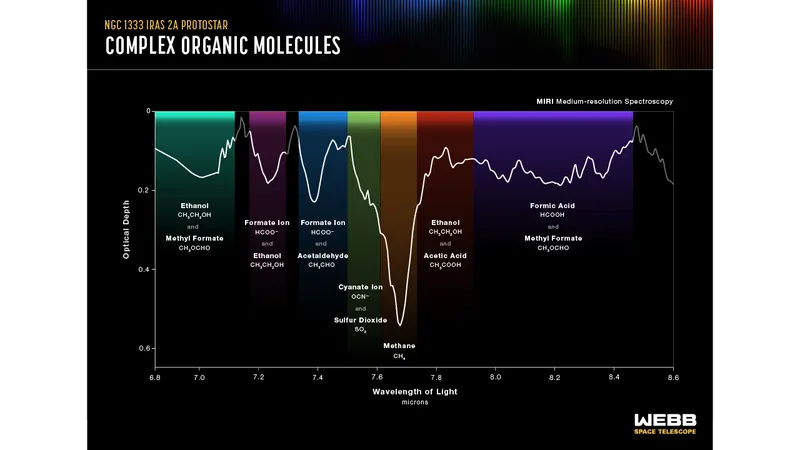The James Webb Space Telescope has found key ingredients necessary to produce potentially habitable worlds around two young stars, even though the stars have not yet formed planets.
Webb's MIRI (Mid-Infrared Instrument) found a variety of icy compounds made of complex organic molecules, or COMs, like ethanol and likely acetic acid around two young protostars, IRAS 2A and IRAS 23385.
IRAS 2A in particular may resemble our early Sun and Solar System.
"This finding contributes to one of the long-standing questions in astrochemistry," says Will Rocha of Leiden University in the Netherlands, team leader of the study.
"What is the origin of complex organic molecules, or COMs, in space? Are they made in the gas phase or in ices? The detection of COMs in ices suggests that solid-phase chemical reactions on the surfaces of cold dust grains can build complex kinds of molecules."

COMs and the emergence of life
Several complex organic molecules have previously been detected in the warm gas phase, but it is believed that they originate from the sublimation of ices.
Sublimation is the change from a solid directly to gas, bypassing the liquid state.
Detecting COMs in ices could lead to greater understanding of the origins of these molecules, and even larger ones, in space.
How are complex organic molecules transported to planets, and what role do they play in the emergence of life on a planet?
COMs in cold ices could be incorporated into comets and asteroids, colliding with forming planets and delivering the ingredients for life to flourish.
The team behind the study also detected simpler molecules like formic acid, methane, formaldehyde and sulphur dioxide.
Sulphur-containing compounds like sulphur dioxide may have played a role in driving metabolic reactions on Earth, for example.
IRAS 2A is a low-mass protostar, and may be similar to our young Sun and Solar System.
Could this be a glimpse of a young star that may eventually develop into a system like our own Solar System, with life on one or more planets?
"All of these molecules can become part of comets and asteroids and eventually new planetary systems when the icy material is transported inward to the planet-forming disk as the protostellar system evolves," says Ewine van Dishoeck of Leiden University, one of the coordinators of the science program.
"We look forward to following this astrochemical trail step-by-step with more Webb data in the coming years."
Read the full paper in the journal Astronomy & Astrophysics
